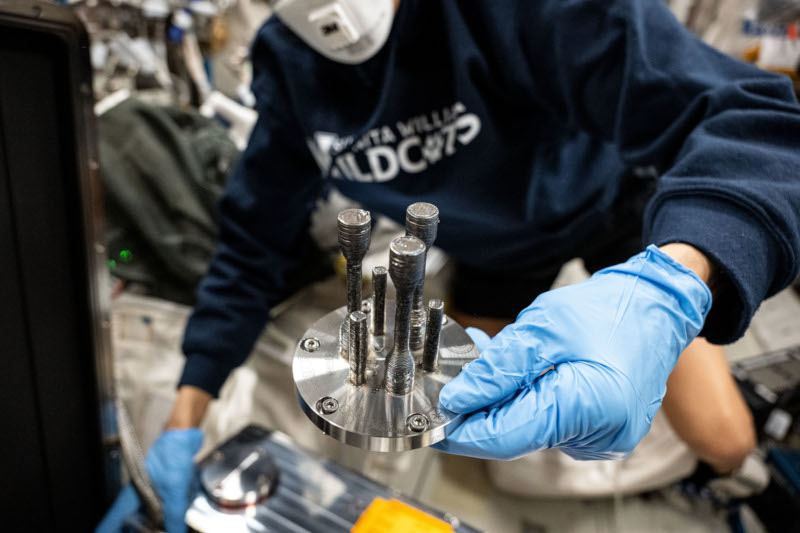For the first time in history, a metal object was 3D printed in space


The European Space Agency (ESA) has produced the first ever 3D printing of a metal object in space. This was the first of four test shapes created by the Metal 3D Printer, built by Airbus and Cranfield University (UK).


Image source: esa.int
Experiments with 3D printing on the ISS began back in 2014. But then it was molten plastic, from which a three-dimensional shape was formed by the printer head. Now this task seems to be relatively simple: the plastic does not heat up too much, and it can be controlled even in zero gravity conditions. Metal 3D printing required significant modifications compared to how it worked on Earth.
Traditional metal 3D printers lay down a layer of metal alloy powder, which is then sintered using an electron or laser beam; then a second layer is applied, the process is repeated, and at the end the finished product is sanded and polished. Working in zero-gravity conditions with metal powder is impractical and dangerous, so in the latest project they imitated a plastic printer – a stainless steel wire is fed to the working head, which is melted on the spot using a laser, after which it immediately cools and hardens, taking the desired shape. For safety reasons, the operation was carried out remotely in a sealed metal box.
The first of four test forms was printed in August. Outwardly, it does not represent anything special, but it is a demonstration of technology that will make future missions less dependent on the Earth – in the future, space station crews will be able to manufacture spare parts or special equipment on their own in orbit. Now, when all four test forms are manufactured, they will be delivered to Earth for analysis.
Recent Posts
Nissan Leaf EV to Become NACS-Ported Compact Crossover in Third Generation
Nissan Leaf can rightfully be considered a long-liver of the electric car market, since the…
OpenAI expects to more than triple its revenue this year and then double it next year.
OpenAI, the market leader in generative artificial intelligence systems, remains nominally a startup, its financial…
OpenAI Decides to Hold 4o Image Generation Launch for Free Users
OpenAI has been forced to delay the release of ChatGPT's built-in image generator for free…
1440p and 240Hz for just $200: Xiaomi updates the 27-inch Redmi G27Q gaming monitor
Xiaomi continues to update its Redmi G27Q gaming monitor every year. The model was first…
Beware, Android is shutting down: OS development will cease to be public, but there is no reason to panic
Android device makers can significantly customize the look and feel of the operating system, but…
Fake GeForce RTX 4090s with RTX 3090 chips have started popping up in China — craftsmen are even changing the GPU markings
In China, scammers have started selling GeForce RTX 3090 graphics cards, passing them off as…